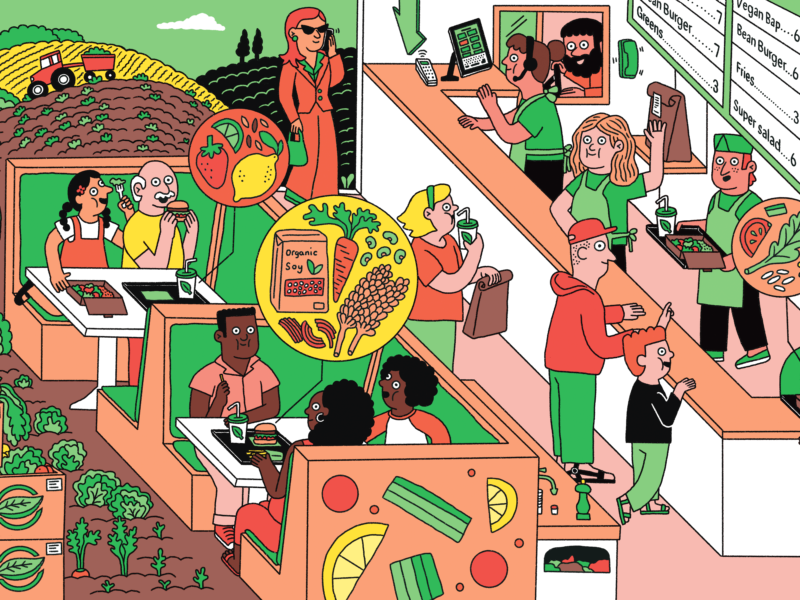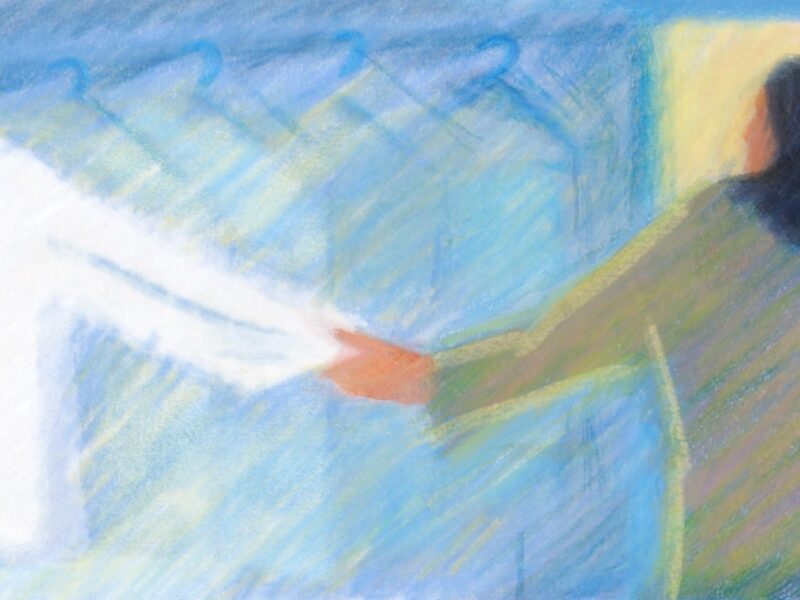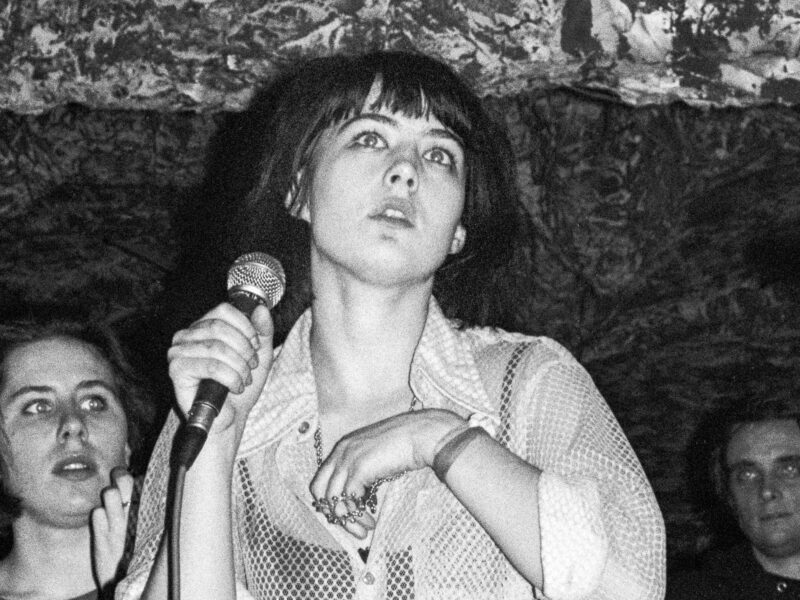We have bought into the false idea that grappling with depression is a solitary journey, but it shouldn’t be.
Since 2002 an international activist/artist group called Feel Tank has been staging multidisciplinary events that call attention to the intersection of “bad feelings” (such as depression, despair, hopelessness) and politics. In 2003 Feel Tank Chicago organized an event called the Annual International Parade of the Politically Depressed: a group of academics and artists gathered in a downtown plaza to talk about all the very legitimate reasons they had for feeling dejected about the state of the world. They wore bathrobes to symbolize that they felt “too depressed to get out of bed” and carried signs with slogans like: Depressed? It might be political. It was a type of performance art, explained one member of the group, meant to inspire conversations around the structural forces that contribute to often-individualized depression and create communities based on solidarity and support.

A few months ago, I heard about a Feel Tank Toronto event at which the participants sang pop songs, repeating the line “my loneliness is killing me” from “Hit Me Baby One More Time” by Britney Spears. This event happened years ago, but I connected to it strongly because loneliness is such a salient aspect of pandemic life during the winter lockdown. The act of singing those lyrics was a means of commenting simultaneously on the irony of mass media teenage heartbreak and on our broken society, with a communal action that created genuine spaces of connection and comfort. Alone in my bedroom, I tried singing the lyrics myself, but my voice sounded tinny in the stillness. Perhaps, I thought, it’s all about the tangential train of thought that arises from such moments. I imagined myself drawn back to Feel Tank’s moment by a delicate thread of dark, saccharine lyrics, which somehow capture the feelings of despair that have reverberated throughout this pandemic year.
My renewed interest in Feel Tank coincided with the release of “Framing Britney Spears,” a New York Times documentary that focuses on the pop star’s struggles with mental illness under the media’s unrelenting, voracious gaze. The film has generated fierce discussions about celebrity and misogyny. Linking it back to Feel Tank broadens the scope of this conversation to the structural politics that influence cultural ideas of mental health, blame, and control.
“Framing Britney Spears” looks at a particularly cruel time in American pop culture, a pre-#metoo era that was characterized by hypocritical and deeply misogynistic standards regarding women’s health, sexuality, femininity, and motherhood. Britney’s rise to fame in the late 1990s coincided with the scandal over Bill Clinton’s extra-marital affair with Monica Lewinsky, then a 23 year-old White House intern. The contrast shone a bright light on American cultural attitudes toward (young) female sexuality, with the media subjecting Monica Lewinsky to blame and shame for what was tacitly presented as her brazen sexuality, while on the other hand expressing puerile interest in whether or not Britney was still a virgin.
The main thread of the documentary deals with a controversial 2008 legal order called a “conservatorship,” whereby a judge ruled that Britney’s mental health issues made her unfit to care for herself or her children and granted her father, Jamie Spears, permanent control of her finances. The terms of the conservatorship are so draconian that they allow Britney’s father to control her freedom of movement and decide who may visit her at home.
Framing Britney Spears traces the efforts of the #FreeBritney movement, a group of fan-activists dedicated to ending the conservatorship; the pop star’s ongoing legal efforts to have her father removed from the conservatorship; and her meteoric rise and fall as a cultural icon during the late 1990s and early 2000s.
Much of the commentary on Framing Britney Spears positions the media culture of the early 2000s as having hit a peak in its misogynist treatment of public female figures. Many commentators have pointed to the progress media culture has made since this time, illustrated by the increased openness of celebrities—such as Selina Gomez and Demi Lovato— about their struggles with mental illness. Others have poked holes in this idea by citing a still-persistent culture of body and sex shaming, as seen in attitudes toward young singers like Billie Eilish and Chloe Bailey.
But what if the structures that both spark and lay blame on “bad emotions” and bodies stretch beyond the music industry?
I was drawn to Feel Tank’s message of the “political potential of ‘bad feelings’ like hopelessness, apathy, anxiety, fear, numbness, despair and ambivalence,” because they seek to see these emotions as the product of wider forces, rather than taking on personal blame. This does not mean denying the medical and biological causes of mental illness, but seeing them as intertwined with a series of factors, especially, as Mark Fischer writes in Capitalist Realism, “the widespread sense that not only is capitalism the only viable political and economic system, but also that it is now impossible even to imagine a coherent alternative to it.”
Despair and hopelessness result from a system that demands unrelenting economic, personal, and political progress at the expense of those too mentally unwell, physically different, or racially other to fit within its goals. Feel Tank, which was founded shortly after the Bush administration’s inauguration of “the war on terror,” hosts conferences and exhibitions, holds protests and potlucks. Its participants play games, gossip, and make art. Above all, Feel Tank aims to create spaces for imagining hope. Collectively discussing and sharing “bad feelings” is not about romanticizing sadness, but about questioning societal definitions of happiness.
As feminist theorist Sara Ahmed writes in her feminist killjoys blog, happiness is often presented as a goal. The one-way path to this happiness is lined with culturally conditioned milestones related to gender (marriage as the happiest moment in one’s life); sexual orientation and race (the American dream: a smiling, white, heterosexual couple with 2.5 kids); and able-ness (mental and physical illnesses as obstacles that are overcome). Ahmed sees the “feminist killjoy” as the one who interjects “but” or “what if”—and the happiness is sucked out of the room. These “buts” come together in the expression of critique and “bad feelings” as a means of creating moments of joy by forging non-linear pathways through life.
Robin James, a philosopher of pop music, connects the forward-moving demands of happiness to female celebrities; she argues that Beyoncé and Lady Gaga’s music videos present the singers as role models because they have overcome sorrow and become stronger from the experience. Thus pain, especially heartbreak, is but one more (mile)stone on the way to happiness. Pain is something the resilient leave behind.
In the context of Framing Britney Spears, I can’t help but wonder: how does the film and its resulting media coverage suggest that Britney should move on?
The media coverage of Framing Britney has been characterized by a clear narrative of leaving sadness behind. This includes deriding the early-2000s cultural landscape and seeking to resolve the issue through collective apologies and the laying of individual blame. Many media outlets have said that they are “sorry” for the way they treated Britney, as did Justin Timberlake, who acknowledged that his poor treatment of his once-girlfriend was the expression of his own sexism. Meanwhile, the #FreeBritney fans are certain that their beloved pop star will be free when her legal case is resolved in her favor and the conservatorship is removed.
But while reflection, apologies, and collective action are necessary starting points, they should not be the end of the conversation. Framing Britney underlines this idea of moving on with a clip from a 2008 episode of MTV’s For the Record, in which Britney describes what freedom means for her: “If I wasn’t under the restraints that I’m under right now, you know, with all the lawyers and doctors and people analyzing me every day and all that kind of stuff, I’d feel so liberated and feel like myself…It’s like—it’s bad. And I’m sad.”
I am rooting for the conservatorship to be lifted. But abolishing the cruel legal arrangement will almost certainly not end public scrutiny of Britney Spears. If she wins her legal battle, we should not see her victory as a reason to celebrate the conclusion of Britney’s journey to freedom, but rather to have a serious conversation about the conditions that led to her situation—and how they persist structurally. It means that if her “bad” feelings continue we should not hold them against her, but welcome them.
Britney and her situation feel relevant right now because many of her songs create impossibly sweet and sad spaces to discuss “bad feelings,” the political structures that contribute to them, and “bad choices” other than happiness. Just as Feel Tank and their message of political depression has been debated in relation to rising despair during the pandemic—characterized by loneliness and isolation, but underlined by government failures to provide monetary, social, and mental health support structures—so can this renewed interest in Britney Spears’ mental health present an opportunity to renew this conversation. Perhaps it can spur us to imagine more political possibilities for discussing our pain.
Listening to “Lucky” one day, I thought of a period of deep despair two summers ago. Riding the train, I used to shield my eyes with my hand while crying in public, pretending that I was gazing at something miraculous in the distance. I find myself imagining a lot of such sheltering hands these days, now trailing over computer keyboards in the new reality of emotional life in mostly virtual spaces. Wrist cramping, I bob my head to the beat of Britney’s songs: with loneliness up ahead, emptiness behind, where do I go? Nobody should be alone if they don’t have to be.



